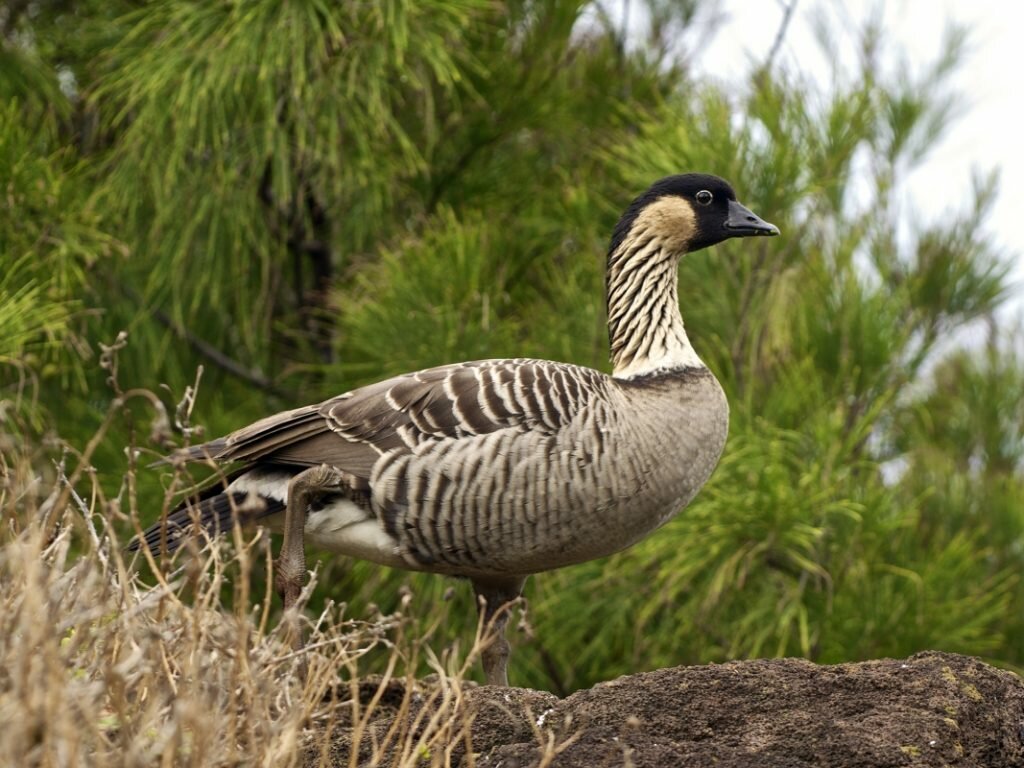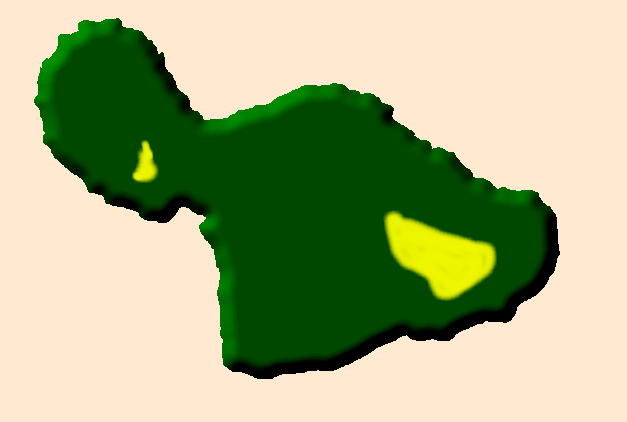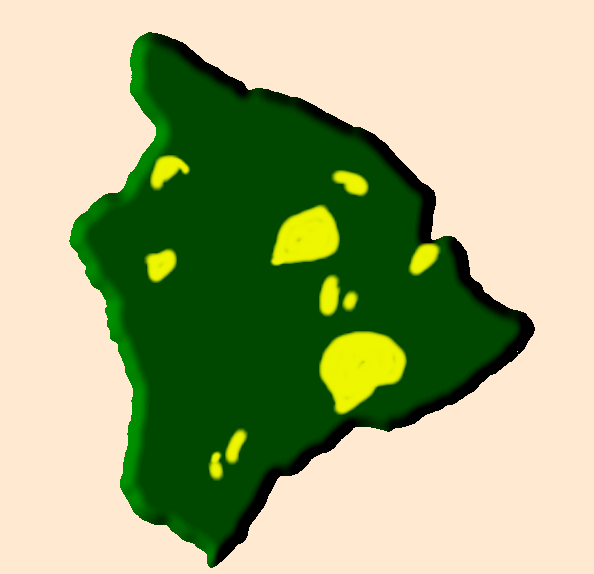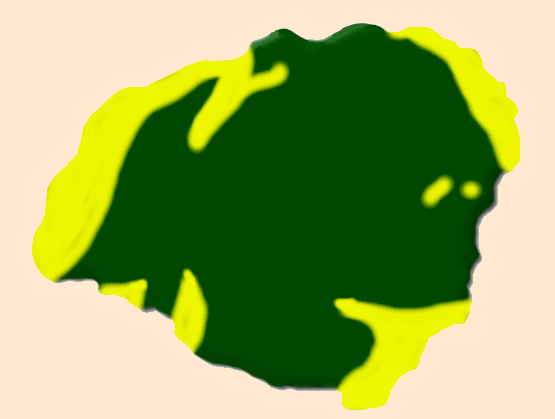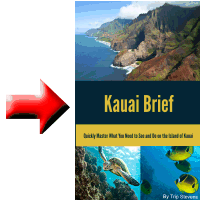By Jörg Hempel – Own work, CC BY-SA 3.0 de
Everything is always prettier in Hawaii. And that is true of their geese too. The Hawaii state bird is the nene or Hawaiian goose. This pretty bird is endangered and there were only 30 of them back in 1951.
Not surprisingly, the Hawaiian goose is only found in Hawaii and mainly on Maui, the Big Island and Kauai. It is estimated that there are less than 200 on Molokai. Below the location of the Hawaiian goose on each island is shown in yellow.
The Nene on Maui
The Nene on the Big Island
The Nene on Kauai
Nene Facts
The nene or Branta Sandvicensis (scientific name) is usually about two feet in length and can weigh up to 7 pounds (for the males). They thrive on vegetated mountain slopes and golf courses. The nene breed from August to April and will typically reuse the same nest. They lay from 1 to 6 eggs with a typical clutch of 3. The incubation period is 30 days and the newly hatched goslings will be unable to fly for the next 12 to 14 weeks. The nene mate for life and are typically seen in pairs. Even though they are considered geese, the nene do not swim or fly as much as other geese. Their wings are not as strong and their feet are not as webbed. They do quite well scrambling over lava rock.
Their name comes from the noise that they make. Most geese make a honking noise or a variant of it. The nene make a sound that sounds literally like “nay, nay.” Hence the unique name.
Fighting Extinction
It is believed that in the 1800’s there were 25,000 nene but it is also estimated that the nene was eliminated from the island of Maui before 1890. Existing hunting laws on the other islands continued to reduce the numbers of the Hawaiian goose. By the mid-50s, their numbers had been reduced so much by hunting and natural predators (mongoose, cats, and dogs) that a concerted effort was made to protect the species. The nene was named as the state bird in 1957. While the species is slowly making a comeback, it is still believed that there are less than 1,000 in existence today.
While the protected status has done the Hawaiian goose well, they have become more domesticated and less fearful of humans. Remember that it is against the law to approach, harass or feed the nene.
